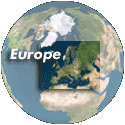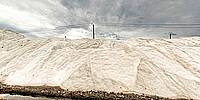
WHY ? [ Why do we use so much salt ...? ]
Tourlida, Messolonghi, Greece
2025, september 28th - 1:08 PM
© 2025 Jean Guy Lathuilière, All Rights Reserved.
Why do we use so much salt ?
Salt is an important part of our lives: as a flavour enhancer, it greatly increases our enjoyment of food. Could this addiction be the reason for our enormous consumption ?
This detail reminds us that some of us humans are obliged to avoid salt in their meals: those affected by high blood pressure and, above all, the associated risks of cardiovascular problems, must deprive themselves of the pleasures of the table.
Sorry for those who have to strictly follow a low-sodium diet, we have to feel a great deal of empathy for them.
Another significant portion of salt is used in industry, and thousands of manufactured, non-food products contain salt, or NaCl, as it is chemically known. Salt is used in the manufacture of around 14,000 products. And let’s not forget that photography, in its early days, also used salt.
In the early 19th century, the “primitive” photographers, the pioneers of photography, sometimes also called the “fathers” of Photography, those who conducted exhaustive research into ways of obtaining a positive print (Hippolyte Bayard, Maxime Du Camp, Louis-Alphonse Poitevin, Gustave Le Gray, Charles Nègre in France, Henry Fox Talbot, sir J.F.W. Herschel in the U.K. and others) used salted paper to make prints*.
This noble technique was employed for two decades, then almost completely abandoned in favour of other processes : fashion can sometimes be very cruel...
Salt, NaCl, Sodium Chloride employed to salt sheets of paper is now enjoying a resurgence : it is used again by contemporary photographers, admittedly very few, of whom I am one.
* [ In a nutshell, and for clarity: a sheet of paper is immersed in a saline solution, then dried and coated with silver nitrate [ AgNO3 ]; dried again, placed under a negative, exposed to sunlight or to U.V. light, then to complete the process, it is developed to produce a stable, visible positive image ].
Closed to the location’s image, about only 200 meters away - but not visible on the panorama - the high interest brand new Museum of Salt which displays lot of informations and items in relation with salt. If you pass by, I highly recommend to visit it, you’ll be surprised by the great quality of this museum: https://saltmuseum.gr/en/
Lat: 38° 19' 28.883" N
Long: 21° 26' 7.282" E
Precision is: Medium. Nearby, but not to the last decimal.
Nikon D 850 + Nikkor f:2,8/10,5mm
Handheld, 6 shots
AutoPano Giga 3.0
Photoshop


 Tap or click the zoom icon in the bottom right corner of the picture to switch between in-page and fullscreen view
Tap or click the zoom icon in the bottom right corner of the picture to switch between in-page and fullscreen view